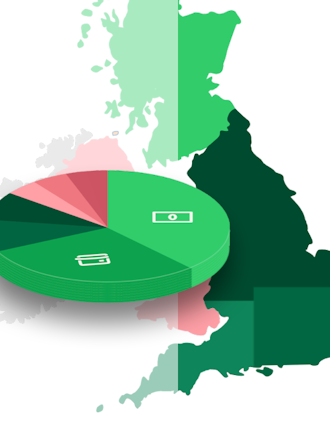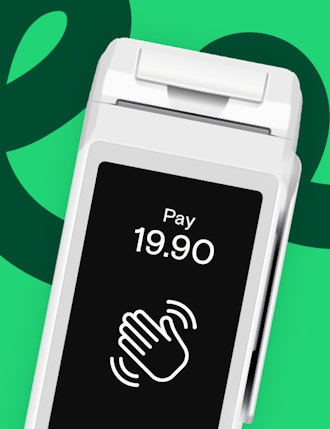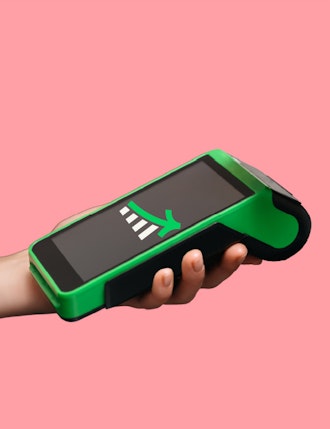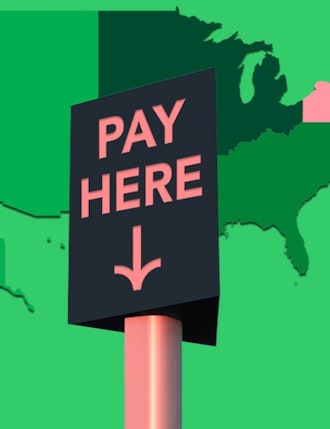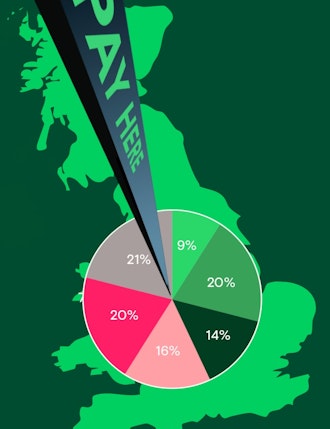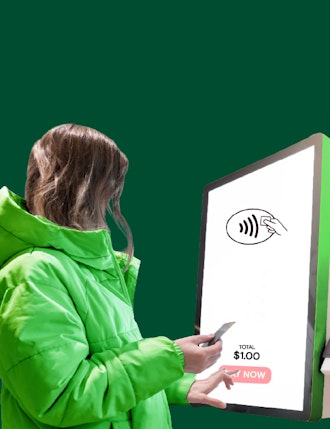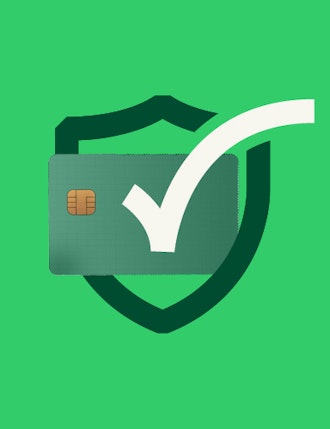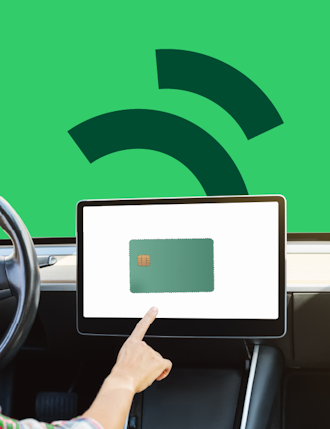The future of biometric payments across the US: An interactive analysis
In July 2024, Aevi conducted a representative survey of 2,000 adults across the United States. The aim was to gauge the country’s familiarity with, concerns about, and expectations of biometric payments. Results uncovered not only the potential for widespread adoption, but also highlighted the key obstacles that are currently standing in the way of wider biometric payment take up, such as security risks, privacy concerns and the overall skepticism.
Through this interactive analysis, we will explore the readiness of Americans’ to embrace biometric payment methods in in-person transactions, look at some of the concerns people have about the technology, and consider the direction of travel for the technology.
Biometric payments - transactions made using biometric data like, fingerprints, eye-scans, and facial recognition- are seen as the future of secure and user-friendly payments in the industry.This is because biometric data is hard to replicate, making it more secure, and it simplifies the user experience by removing complex authentication methods like passwords or signatures. As this technology gains traction across the globe, with the US leading the charge, it’s important to examine the public’s perception and how this intersects with key concerns like trust, security, privacy, and technological literacy.
Through this extensive survey, which polled 2,000 adults across the US, we aim to shine a light on these pivotal factors, and reveal critical regional differences in awareness and familiarity with this technology, trust, and adoption. By exploring these nuances, we are able to gain a deeper understanding of how biometric payments are perceived today and what must be addressed for a widespread, and more successful future adoption.
Concerns and Preferences Across the US
When looking at the national landscape, the results from all 2000 respondents reveal critical insights into the broader acceptance and concerns surrounding biometric payments. Notably, 46% of all Americans are still largely unfamiliar with biometric payment methods, highlighting a near 50/50 knowledge gap across the country.
“With 46% of Americans still unfamiliar with biometric payments, there’s a striking 50/50 knowledge gap nationwide.”
Despite this, 41% of respondents indicate “fingerprints” as their preferred biometric payment verification method, followed by 25% opting for facial recognition. However, a staggering 60% of respondents cited security concerns as the main reason for hesitation, closely followed by privacy concerns at 56%. These concerns significantly outweighed other factors like: technical failures (34%), lack of familiarity or convenience (33% and 15% respectively), and speed (10%).
“41% favor 'fingerprints' as their go-to biometric payment method”
It’s important to note that our survey, conducted between July 9th and July 26th 2024, coincided with CrowdStrike’s global outage. This timing makes this data set even more compelling as it captures the respondents’ attitudes toward technology at a heightened period of awareness regarding cybersecurity and payments.
Along similar lines, trust in companies is also divided, with 45% of Americans expressing trust in how their biometric data is handled, while 26% remain distrustful.
Geographic Trends in Biometric Payments
As our interactive map illustrates, the below insights showcase the overall familiarity with biometric payment methods by macro-region:
- The South leads in biometric awareness, with 57.12% familiar with these payment methods.
- The Midwest, by contrast, had the lowest among the regions with only 49.19% of respondents being familiar with it.
- Both West and the North-East regions hover in the middle, with 52.83% and 53.85% familiarity, respectively.
The survey showcases a nation divided, with nearly half of Americans across all regions remaining unfamiliar with biometric technologies. While awareness may be increasing, these results highlight the need for further education and exploration into the factors driving resistance, particularly in the Midwest. Strategic efforts will be crucial in fostering greater awareness and familiarity moving forward.
Usage Frequency Across the Nation
Respondents were asked to indicate the frequency in which they use biometric payments in their in-person transactions, with daily or at least twice a week being classed as frequent or regular and only once a year or less being categorized as infrequent, sporadic.
- Although 52.83% of respondents in the West are familiar with biometric payments, only 20.40% use them on a regular basis, while 47% never use them.
- Regular usage was similar in the South, where 19.86% use biometrics at least weekly.
- In the North-East a significantly lower percentage of respondents use biometric payments frequently: 15.18%.
- Midwest once again showcased the lowest usage, 12.16% of respondents in the Midwest use biometrics consistently.
"Familiarity doesn’t guarantee usage—awareness often outpaces regular adoption across regions."
The results show a clear disparity between familiarity with biometric payments and actual regular usage, which remains sporadic across all regions. So, why is there such a gap between awareness and usage? Potential factors behind such a chasm warrant further investigation and, as we’ll analyze in later sections, may include concerns about security, privacy and even a lack of trust in at least some institutions.
Trust in Companies Handling Biometric Data
With data handling, privacy, and trust being central discourse when it comes to technology and public perception, as well as resistance in adoption, we looked at both the levels of trust and which institutions were the least and most trusted.
Below we can see which institutions were the least trusted:
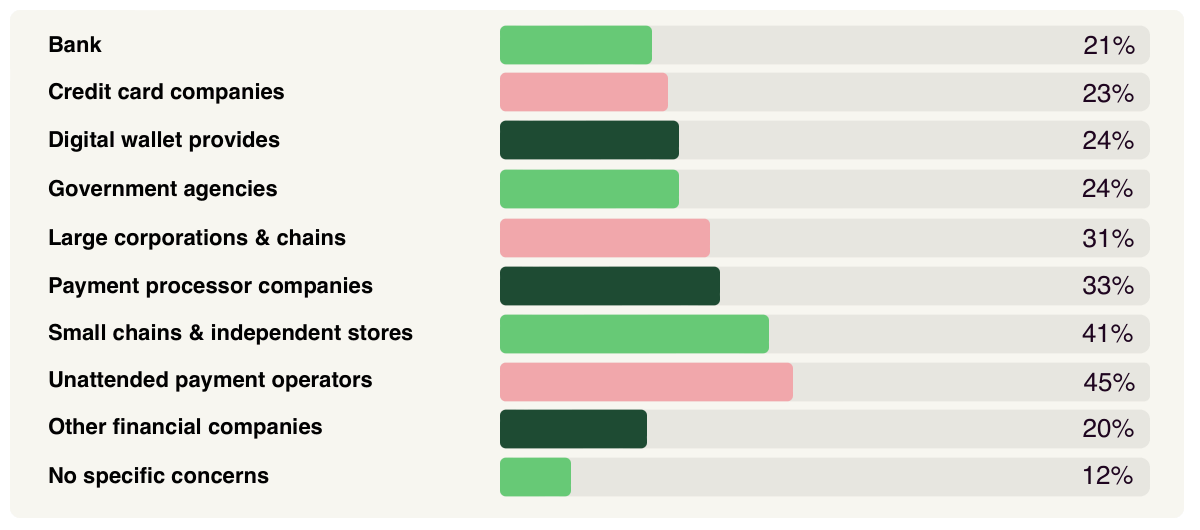
- Whilst still not in the majority, the West reports the highest trust in companies managing biometric data, with 47.39% expressing confidence.
- Trust in the Midwest is lower, with 30.81% expressing distrust and only 39.19% trusting companies with their data.
- Both South and North-East regions show moderate levels of trust, with 46.33% in the South and 45.55% in the North-East.
Trust can be a clear barrier to wider adoption, especially in the Midwest, where skepticism about data privacy remains high.
Furthermore, when examining which institutions were considered to be the least trustworthy with biometric data, the results clearly indicated that respondents across the country were predominantly distrustful of unattended retail and small chains/ independent stores with 45% and 41% respectively. These were followed by payment processing companies and large corporations (33% and 31%).
Concerns about Biometric Payments
Security and privacy are the biggest concerns across all regions, as indicated by 60% and 56% of all respondents respectively.
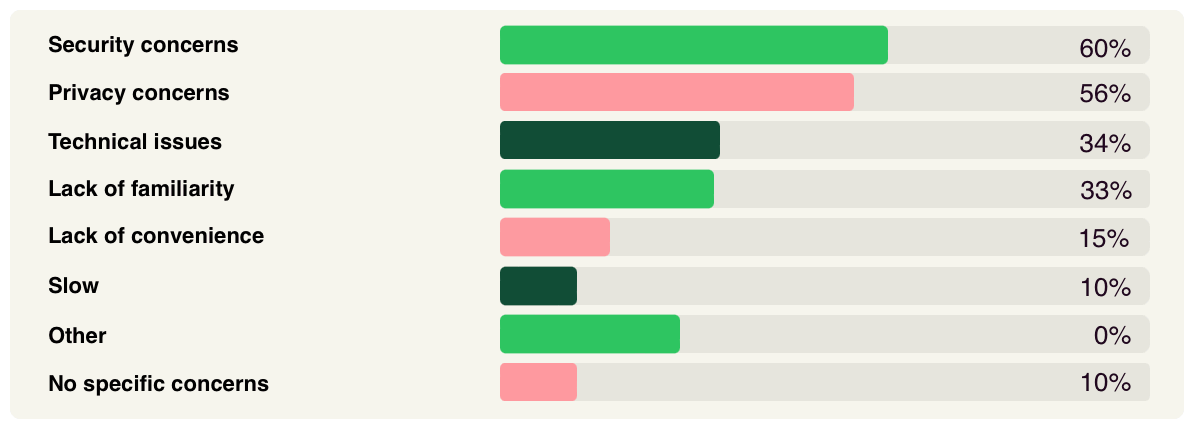
However, in the Midwest 61.35% of respondents cited security as the top reason for their hesitation, while 61.08% expressed privacy concerns, further highlighting how vigilance remains the highest among all regions.
Similarly, in the South, security and privacy dominate, with 56.98% and 54.39% respectively.
Once more, results overlap in the West and the North-East, with over 55% in both regions citing privacy and security as major issues.
Favored Biometric Methods
Across the US, fingerprints rule as the most preferred biometric payment method.
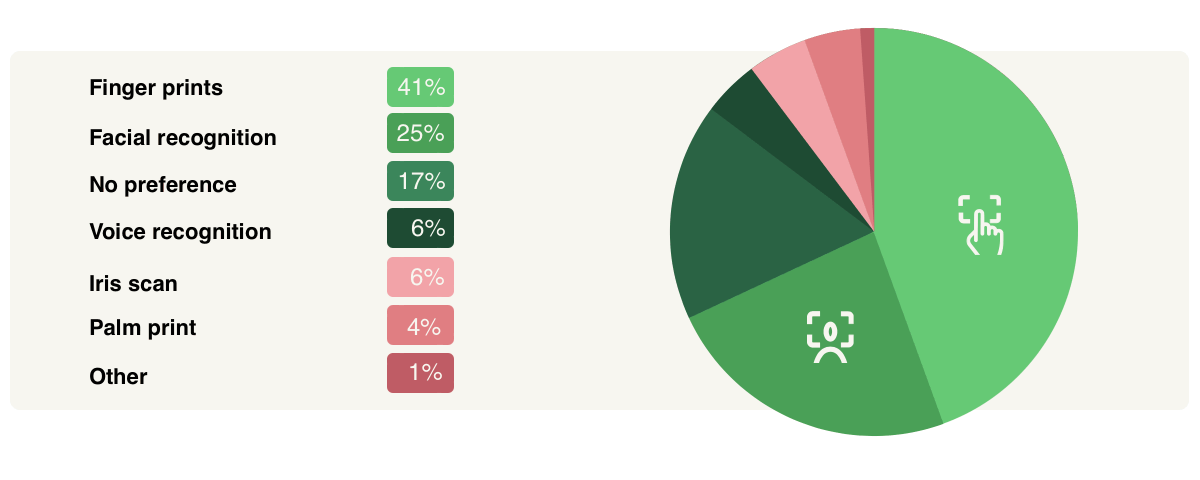
- South and West: Over 43% of respondents in both regions favor fingerprints.
- Midwest: 37.84% prefer fingerprints, with 23.51% choosing facial recognition.
- Northeast: 40.28% favor fingerprints, followed by 27.53% who prefer facial recognition.
Although fingerprints remain the dominant biometric method, facial recognition is notably gaining traction, especially in the North-East.
When asked what benefits biometric payments provide, 35% reported ‘less interaction with in-store staff’ as a top benefit. This aspect got the most upvotes, followed by ‘better management of finances’ which reached 22% of upvotes, while ‘enhanced security’ landed third with 17%.
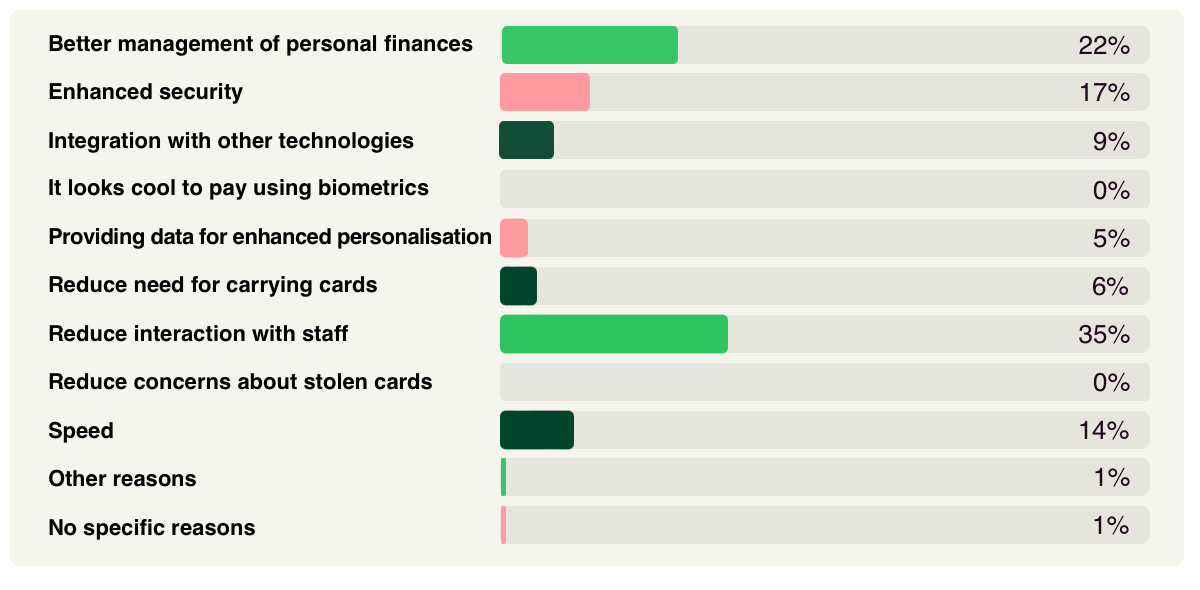
A Diverse Landscape for Biometric Payments
The 2024 Biometric Payment Survey reveals a complex landscape for biometric payments in the U.S., with Southern states leading the charge both in familiarity and usage, while the West demonstrates the highest trust in companies and overall optimism towards the technology.
Overall, with less than half of the US population familiar with biometric payments, there’s a significant opportunity to grow adoption as more people learn about the technology. As payment providers prepare for this future, solutions like payment orchestration can play a key role in facilitating this shift.
"Payment orchestration is key as providers prepare for the future."
The survey also clearly indicates that the Midwest lags in overall awareness, holding significant concerns over security and privacy. Security experts must stay ahead of the curve by developing industry standards that ensure the security and privacy of biometric data.
Although security and privacy remain top concerns across all regions, respondents who do adopt biometric payments report an overall positive experience, with a mere 4% of Americans indicating otherwise and fingerprints were clearly identified as the preferred method.
Another standout aspect surrounding benefits of biometric payment was the reduced interaction with in-store staff playing a crucial part in adopting this method. This got 35% (the majority) of upvotes thus making it the main ‘selling point’ for adopting biometric payments. Payment technology providers and developers should pay attention as this insight should help guide product development and prioritize features that align with user preferences.
The results should also serve as a wake-up call for Banks and payment processors as they adopt or expand biometric methods to remain competitive. Now is the time for them to engage with partners who can help them implement these systems. Partners offering payment orchestration platforms can be key to not only preparing for the future of payments, but also integrating new partners and technologies for their merchants with ease. In-person payment orchestration, in particular, provides stakeholders across the payment value chain with digital flexibility, freedom of choice, and access to valuable data.
Interested in reading more around this subject? Here are some useful articles…

